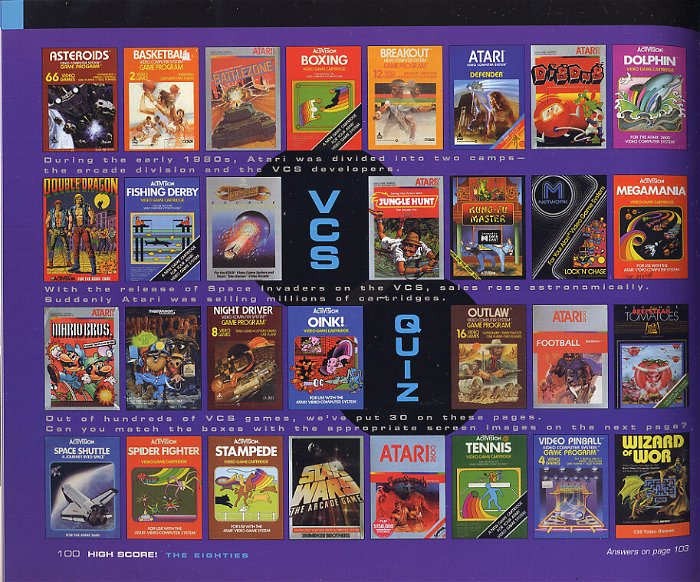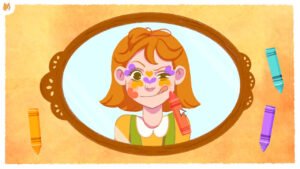In the most recent phase of Kickstarter’s endevour of funding all the projects we want the most – long time industry writer Rusel Demaria has started his own to fund his book documenting video game history, HighScore.
Comics and Gaming Magazine was able to catch up with him and discuss what the book means to him, to its audience, and why Kickstarter is the way to get this done. Rusel is requesting $25,000 to make this mission a possibility. Which, as of publication, has been met and now sits at over $30,000.
 C&G Magazine: Tell me a bit about yourself. You’ve been involved with the game industry for a fair amount of time, what sort of things have you worked on?
C&G Magazine: Tell me a bit about yourself. You’ve been involved with the game industry for a fair amount of time, what sort of things have you worked on?
Rusel Demaria: I started writing about all kinds of products really, but games whenever I could. That was what I wanted to do but there were very few places to do that in the early 80’s. I started writing for magazines that were more game related full time in 1989 and sort of stopped writing about other technology. So, the biggest thing was being a senior editor for PC Games magazine in 1990, also an editor for GamePro, and then starting Prima strategy guide division. Those are some of the biggest points in my career. I worked for David Perry for about five years, as both an author on his book on game design, as well as an assistant. And books, I’ve written many, many strategy guides. Some of them I’m very proud of, some of them are fictional and tell stories. The books I’m especially proud of would probably be David’s book on game design which was a 1000 pages, also Highscore of course and Reset, the book about the positive impact of games.
CGM: So let’s get right into HighScore. When you first wrote HighScore, had you been keeping tabs on games history?
RD: I had watched game history, I was aware of it just by virtue of being in it. I had been the senior editor at several magazines, and knew lots of people. But not to the extent I need to write a book. There was a lot of research involved, and finding people was one of the most difficult parts. Dave Rosen, the founder of SEGA, was especially difficult. Very few people knew where he was now. When I did find him, he sent me some really cool stuff like original flyers for SEGA products.
The other one that was really a funny story involves David Theurer, a designer at Tempest. He was one of the people I wanted to find but again, noone knew where he was. He just disappeared. I was out hiking with a friend of mine, and she said she used to be married to one of the guys from Tempest, and it turned out to be Dave, so that’s how I found him. It was very weird, but that’s kind of how it went. It was a strange experience. Ultimately it took a year of my time.
CGM: What are some aspects of video game history you’re trying to express with HighScore?
RD: What I personally love is the personal story. When a company maxed out their credit cards and was on the brink of bankruptcy, and somehow hit the mother load and suddenly it worked. The story of Jeff Braun, and Will Wright and SimCity – those personal stories.
As we went into the 90’s, those personal stories became less available, it was just big companies like Sony and Microsoft, and it was hard to find people to tell stories about what happened within those places. In the years since where my book stopped around the year 2000, things have radically changed. Now there are lots and lots of great stories again.
CGM: Is this book intended for players, or is it a comprehensive history for the general public?
RD: Both. I’ve had comments from reader saying they bought the book for themselves, but their mother or sister picked it up and started reading it and wouldn’t put it down. It tells the story in a way that’s both graphical and engaging for people who aren’t game fans. At least that’s what I’ve heard.
CGM: It’s not too ‘in’ with names and dates?
RD: I wouldn’t call it a textbook approach, its much more a story approach, it’s more telling the story and showing the picture. There are names and dates of course, but it’s not written like a course. Although it is used in game design courses, it wasn’t written with that in mind. It was written in a very personal style.
CGM: What were you able to accomplish in the first two runs of the book? What were your goals?
RD: Well, getting almost all significant companies represented, getting as many of the pioneers in the book through interviews and pictures was a main goal. I think, with a few gaps, I was pretty successful in getting what I wanted to get. It wasn’t easy, I also got things I didn’t expect to get. Like any research project, it opens up and you find all sorts of things you didn’t expect to get.
CGM: Do you have any experiences that stand out from the previous productions?
RD: Oh god, plenty [laughs]. There were some wonderful experiences, and one that really touched me. I didn’t know John Romero at the time and when I finally contacted him and said ‘I’m making this book, I would like to interview you,’ he invited me over to his house while I was in Texas to see Ensemble Studio. John was so generous with me. He had a very extensive collection of Apple 2 software and we ended up scanning his whole collection. A lot of the images in the book are from him. We spent the whole night talking and he even went into Photoshop and fixed the scans. He was a huge supporter and still is. He and Brenda Brathwaite, his partner, are offering to buy dinner for up to 20 people as a reward. He offered this, I didn’t ask him. It was his idea.
CGM: What are some spotlight articles or interviews in HighScore?
RD: One of the coolest things was meeting Ed Logg (Asteroids and Centipede). He was very generous person as well. He went into his own little vault and brought out technical drawing and sketches for Asteroids, which are in the book, but not as prominently as I would like. Trip Hawkins was also extraordinary. He invited me over to his house and him and his family went to bed. He let me go free and have the full run of all his stuff. I found the original business plan for EA, and it was a remarkable document. It was just so predictive. He met all his five-year goals.
CGM: Why Kickstarter?
RD: It was actually interesting, so a couple of years ago I was going to do the book. I received a very small advance from the publisher. But I had to get a job, and because of that – I wasn’t really able to work on the book. And the publisher has been amazingly patient. I’ve since been laid off, but now I have a lot of time to work on the Highscore. So I called up David Perry and asked him, and he suggested a Kickstarter, and mentioned what Tim Schafer was able to do, maybe offer lunch with some of your industry contacts. David was good with doing it, the industry response to me asking and it’s been amazing.
CGM: What is the ambition for the third edition? What has changed in the last ten years?
RD: [Laughs] Well if you’re a game person you know – a lot has changed. But the resurgence of the indie developer, and mobile games, that are definitely not going away, are big things. Phones, tablets and social games which have tremendously expanded the audience of gamers to 100’s of millions. And we’ve got the amazing change from the Wii to the Kinect and Move – and that’s a direction that may not be the most important, but it certainly a very interesting one. Looking at who’s where, which pioneers are still in the industry and what they’re doing now. I’m also planning on restructuring the whole book. I want to make it better where I didn’t think it was good enough and add more content to some existing areas. I also have plans for a significant addition from 70 to 100 pages.
CGM: Are the any specific people you want to talk to for the newest edition?
RD: Lots. I just recently wrote to the creator of MineCraft, Notch and asked if I could get together with him. Mark Pincus at Zynga as well, I know a ton of people that I’ll be talking too, but it’s the ones that I don’t now that will be more challenging. But I know lots of people who know lots of people, who know lots of people. Ultimately that’s what networking is all about – so anyone I need to reach, I’ll hopefully know how to reach him or her.
CGM: Can you tell me a bit about some of the support you’re getting from industry icons? You have pledges from Will Wright and John Romero, but is there any other support?
RD: Sid Meier, and Tommy Tallarico did videos for me, and some of them have donated money, but mostly they are giving up their times for the donation rewards. I probably haven’t had dinner with most of them, and would love too – but that’s what they’re offering. I wish it were easier for people to be able to travel, which is why I want to throw a big party at GDC next year in San Francisco. I’d invite all the pioneers for people to meet. Anyone who donates will get an invitation.
CGM: Why do you think this book is important to gamers?
RD: It’s a unique approach and I think the work it took to go through all the stuff is something that will be very difficult to repeat, it was a full year of my time, and it’s not an easy thing to accomplish. Now that it’s out of print, it would be a big waste of all that effort if it doesn’t get back into print. It will be something I will find very difficult to walk away from and say ‘well, that’s done.’
CGM: You were talking about how the excess donations will go towards a party – tell us a bit about this event.
RD: My vision of it is to find a big enough venue and get a commitment from the industry veterans, and with a little work – I think it’ll be something that everyone will want to come too. I would like to make it into a little bit of a roundtable where all these people can talk about the industry and where they’ve been. I really hope it can happen but I need support for this thing. For those who would like to see this book and event, the only way I can get it done is through support. HighScore will disappear if I can’t find a way to make it work, that’s the bottom line.
Rusel’s Kickstarter is continuing to raise money until April 4. If you would like to contribute to the fund, you can find his Kickstart page at this link




